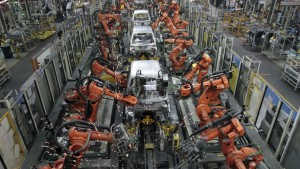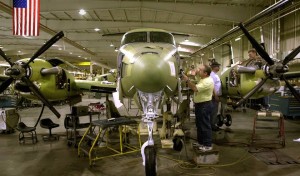I’ve never been much of a gearhead. While I appreciate the craftsmanship some folks put into their automotive passion, the idea of overhauling engines and turning wrenches on cars just doesn’t do anything for me.
That might surprise those of you who know how meticulously I care for my automobiles. But my slavish attention to cleanliness and detail has more to do with expecting the car to last several hundred thousand miles while still being spiffy enough to park alongside the late-model Porsches and Aston Martins that dot the airport landscape than any innate attraction to the vehicle itself.
In fact, my rides have always been low-cost, entry-level models. See, I’m saving my shekels for use on a different kind of machine. One with wings.
On the surface, general aviation aircraft are a lot like cars: four-seat metal conveyances powered by reciprocating piston engines. But that’s on the outside. There’s so much more that a casual glance does not reveal about the difference between the two. I think it has a lot to do with how they’re born, designed, used, and cared for.

Cars, for the most part, are utilitarian machines built in massive numbers by other machines on automated assembly lines. They’re used pretty much the same way, operated by poorly-trained individuals who give the operation and care of the vehicle no thought whatsoever, literally driving it into the ground until it’s nothing but a dead hulk at some junkyard. The average car is unpampered and spends most of its time sitting in traffic or a stop light. Very few people consider the act of driving a car to be something special or memorable. And when one of these machines is damaged, the decision to repair or scrap is based solely on cold mathematical calculation. Cars depreciate in value from the day they’re made until the day they’re unceremoniously retired.
Airplanes are the polar opposite. From the 1903 Wright Flyer to today’s largest airliners, they are built in minuscule numbers, each one hand-crafted by teams of highly skilled and well-compensated experts. They’re so individualized that a door from one aircraft wouldn’t fit onto the very next airframe to come down the assembly line without significant trimming and adjustment. Each one is literally unique, displaying a distinct personality from long before it’s even rolled out the factory door. Nothing about aircraft ownership makes financial sense — even for a publicly traded airline. If you don’t believe me, take a look at the profit and loss numbers for their holding companies over the past half century. Airplanes of every size and stripe are propelled as much by dreams as by the stinky liquid that sloshes around in their fuel tanks.
Many aviators “get it”, but few express it quite like David Foxx of Airscape Magazine. I wish more people read his work. He recently detailed the long and melancholic history of one particular Lockheed Constellation. After reading the post, it occurred to me that it’s a shame we don’t write more of these stories down. For one thing, these were more than just airplanes. They were (and still are) technological marvels, time machines, and works of art that have more in common with one of those ridiculously expensive watches than a typical car.

But more than that, they’re important pieces of history. Many of them are now lost to us, and each one seems to have its own unique and interesting tale to tell. The story of their journey is inseparable from that of the people who built and operated them. Where some might see nothing more than the declining fortunes of a piece of old equipment, those with a passion for airplanes will see in Foxx’s post reflections of Burbank, Lockheed, the war, the development of world air travel, and the rise and fall of countless airlines, charter companies, and enterprises. With each image you can feel the aspirations and dreams of those who saw her in that light.
From the beat-down trainer that spent decades enduring the punishment of neophyte pilots or the experimental craft built in someone’s garage to a beloved personal jet, airplanes are so much more than a collection of parts. They’re a collection of stories, each one worth the telling.

Great piece Ron! I agree – it is important to value our aviation history and do our best to preserve it. This is true for more than just airplanes. There is currently a group attempting to preserve and restore the beautiful old original terminal building at my airport. Like the vintage planes we love so much, the old terminal also has a story to tell. What’s needed now are people who are willing to make the effort – not only to tell the stories, but to save some of the key players for future generations to enjoy.
Yes, volunteers and donors are so vital to preserving our history. I hope the effort to save that terminal building are successful. The architecture associated with aviation is often as impressive as the airplanes themselves. There’s a great example just a few miles from my home: two massive blimp hangars from World War II. They’re in such bad shape that the roof has partially collapsed on one of them. Sad. I wouldn’t be surprised if one or both of them simply fell apart and were demolished.
And would you believe there’s still an original building left at LAX? They call it “Hangar 1”. It was built in 1929 and still sits there, an art deco masterpiece, ignoring the years and waiting for those Lockheed Vegas and Stinson Reliants to taxi back up to her doors.
Thanks Ron! I’m keen to do more of these stories. The full history of significant aircraft, such as restored warbirds and rare antiques, are usually really well researched and documented. But as you say, everything from a Skyhawk to a G.V is a much-loved marvel. There’s just no such thing as an “ordinary” airplane.
What impressed me most about your article was the research and detail you uncovered, the specificity of dates, names, and places. That’s where I really felt the love. Even in the internet age, it can’t be easy to dig up all that stuff. And the photos! They’re in excellent shape considering their age and the media on which they’ve existed for all those decades. It reminded me of the “first Gulfstream” post that I did a while back.
Clearly that Connie was cared for since day one by passengers, mechanics, spotters, Lockheed veterans, and others. It brings a smile to my face because it reveals that yes, we do love our history, and now the internet makes it easier to preserve and share it with a wider audience.
Ron, totally true: aircraft manufacturing is a beautiful blend of engineering and art. Thanks for the story, it makes me want to continue getting back to my roots and helps me remember why I fell in love with aviation in the first place!
Glad you found the post inspirational, Rob! Sometimes the cost and hassle of flying can wear on us. That’s one thing I’ll give to the automotive world: cars are easy, accessible, and predictable when compared to airplanes. But stepping back to look at the craftsmanship and passion put into our aircraft can be refreshing.
I always love your writing! And you’re so right- each aircraft has it’s own different personality. We come to trust and care for them, much more so than we do cars. I’m still fascinated with these machines. How wonderful the gift of flight!
Thanks, Chris! I love the way airplanes “talk” to us. That’s one of the reasons I appreciate museums like Planes of Fame so much: the aircraft in their collection are still flown, so they look and smell much different than the dusty relics found in your typical aircraft display.
Ron, Love this! And Yes, we need more stories like this. These planes all have stories to tell too. Thank you for a great post!